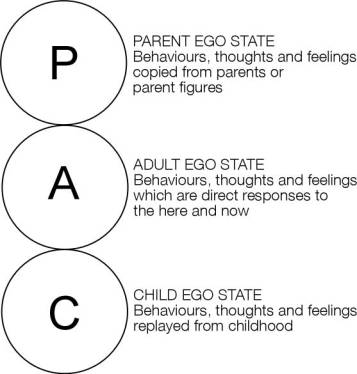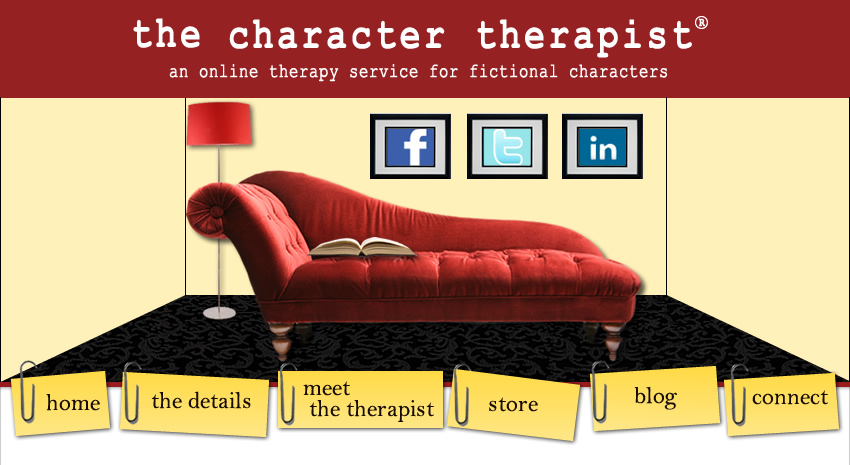 According to Transactional Analysis (TA), we communicate via three different Ego States (parts of ourselves):
According to Transactional Analysis (TA), we communicate via three different Ego States (parts of ourselves):(P)arent
(A)dult
(C)hild
[I know what you're thinking, but no, this is not Freud's Id, Ego, and Superego, although they have been compared. Freud's theory says that each state is one type of behavior: Id=feeling, Ego=thinking, Superego=judging. TA says that each Ego State above has all three.]
Every person has a trio of P-A-C, and we constantly shift back and forth between them in our interactions (a.k.a. transactions) with others. I'll break them down.
The Parent ego state is a set of thoughts, feelings, and behaviors that we learn from our parents (or caretakers). It's almost like we unconsciously mimic them, incorporating their values, morals, and core beliefs into our outer communication. We express these ideals by being either critical or nurturing.
The Nurturing Parent is soft, loving, and quick to give permission. The Critical Parent is the other side of the coin. When in this state, a person will react as they imagined their parent might have reacted, or they act toward others the way their parents acted toward them. It's uncanny, but we might use some of the exact same phrases we head from our parents, or strike the same postures, use the same mannerisms or gestures...we become our parents.
The Child ego state is who we are at our most natural. This is when we behave like we did in childhood. There are two parts to the Child ego state, both of which have positive and negative aspects. The first is the Natural Child, which is much like my three-year-old. On the positive side, she is spontaneous, playful, lovable, and charming, and experiences the world in a direct, authentic, and immediate way. On the negative side, she can be impulsive to the degree her safety is compromised.
The Adapted Child is the part of our personality that has learned to comply with the parental messages we received growing up. The positive aspect of the Adapted Child is that we respond appropriately in social situations. The negative aspect is that we overadapt and give up our power and discount our value, worth, and dignity.
Dr. Carol Solomon (2003) gives a good example of how each of the above Ego States would respond to the simple action of a child playing in the sand.
Nurturing Parent: Go ahead, play and have fun!
Critical Parent: Now, don't you dare get yourself all messy!
Adult: This sand looks really interesting. I can make a castle.
Natural Child: WOW! Look how tall my castle is!!!!!
Adapted Child: I better not get my clothes all dirty.
At any given moment, our characters (and us) will volley amongst each of these ego states when interacting with others and our inner selves. Depending on which Ego state the person with whom we are communicating is operating from, signals can get BIG time crossed. And this usually is where we have misunderstandings, hurt feelings, and less-than-satisfying communication.
Next week, I'll go into how you can know which Ego State your character is using. Hopefully you find this as fascinating as I!
Q4U: Have you ever stopped mid-sentence, repeating verbatim something your parents said to you? What was it?









2 comments:
Ahh, Transactional Analysis and how we can be thinking five contradictory thoughts at once. It's a really interesting theory but I've always found it one of the most difficult ones to hold in my mind while writing. Oh well, I suppose it helps simply to understand where different parts of the thought might be coming from.
Wow! It's amazing we can even make a decision or a statement. LOL
That said, I think this information will be useful in understanding where my characters are coming from when they interact with one another, especially in conjunction with the different personality times. Just imagine: A get-it-done lion discussing the sink full of dirty dishes with the just-relax golden retriever.
Post a Comment
Both comments and questions are welcome. I hope you enjoyed your time on the couch today.